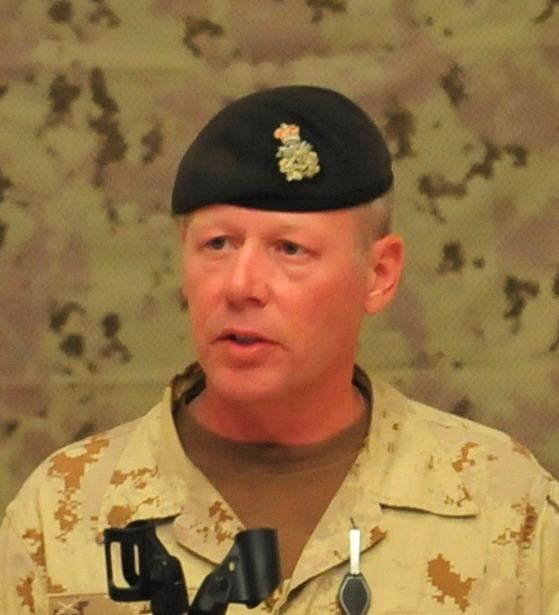Type Commissioned officer Abbreviation CDS Formation 1964 | Status Currently constituted | |
 | ||
Term length At Her Majesty's pleasure | ||
The Chief of the Defence Staff (CDS) (French: chef d'état-major de la Défense) is the second most senior member of the Canadian Armed Forces (after the commander-in-chief) and heads the Armed Forces Council, having primary responsibility for command, control, and administration of the forces, as well as military strategy, plans, and requirements. The position is held by a senior member of one of the three main branches of the Canadian Armed Forces. The current CDS, since 17 July 2015, is Jonathan Vance.
Contents
History
Until 1964, there existed a Chief of the Naval Staff, as head of the Royal Canadian Navy; a Chief of the General Staff, as head of the Canadian Army; and a Chief of the Air Staff, as head of the Royal Canadian Air Force. A position known as the Chairman of the Chiefs of Staff Committee existed, which had a loose coordination function, although it lacked the command and control responsibilities of the later position of Chief of the Defence Staff (CDS).
The position of Chairman of the Chiefs of Staff Committee and the positions of the three service chiefs were abolished in 1964 and replaced by the position of CDS. This change was based on a white paper initiated by Paul Hellyer, Minister of National Defence in the Cabinet headed by Lester B. Pearson. Following the tabling of the white paper, the minister introduced legislation that took effect in August 1964. The newly established Chief of the Defence Staff was to "head all of Canada's military forces, backed by a defence headquarters that was integrated and restructured to reflect six so-called functional commands, replacing eleven former service commands. Functional described a command that was non-geographic and beyond any particular service or traditional arm." In May 1967, Bill C-243 was passed by parliament and was effective as of 1 February 1968. The law dissolved the three armed services and created the Canadian Armed Forces under the command of the CDS.
In 2011, the three functional commands—named Maritime Command, Land Force Command, and Air Command—had their original names reinstated, becoming once again the Royal Canadian Navy, Canadian Army, and Royal Canadian Air Force, respectively.
Rank and command
The Chief of the Defence Staff follows in rank only the Commander-in-Chief of the Canadian Armed Forces, who appoints the CDS and is the person from whom the CDS receives his or her orders. In practice, the commander-in-chief—the Canadian monarch, represented by the governor general—typically acts only on the advice of his or her ministers of the Crown, meaning the CDS normally reports directly to the Minister of National Defence.
The CDS has been charged with four main priorities, each having multiple sub-priorities: The first is to conduct operations, which includes the successful implementation of domestic and international operations, protection of the forces through a culture of risk management, and ensuring that recruitment is at a level required to sustain the operational forces at full potential to meet their commitments. Secondly, the CDS is expected to expand the regular and reserve forces to meet international and domestic obligations, which means the management of the Canadian Forces Recruiting Group so as to streamline the enlistment process of new forces members. The third task is to implement the national defence strategy as outlined by the Queen-in-Council, requiring both the acquisition of new equipment and the strengthening of diplomatic relations via the United Nations, North Atlantic Treaty Organization, and North American Aerospace Defence Command." Lastly, the CDS must enhance the forces' programme delivery while optimising the use of resources.
The CDS is also the Chair of the Canadian Forces Decorations Advisory Committee, which reviews and recommends to the governor general members of the forces eligible to receive decorations for valour, bravery, and meritorious service, as well as Commander-in-Chief Unit Commendations. This committee mirrors that for the Order of Military Merit, of which the CDS is ex-officio a member and the Principal Commander. Separately, the CDS presents the Chief of the Defence Staff Commendation (French: Mention élogieuse du Chef d'état-major de la Défense)—in the form of a gold bar pin that bears three equilaterally spaced maple leaves—to recognise deeds or activities beyond the normal demands of duty, as well as the Canadian Forces Medallion for Distinguished Service, which is given by the CDS on behalf of the entire forces.
The CDS awards the Chief of the Defence Staff Commendation to recognise activity or service beyond regular expectations. It can be presented to members of the Canadian Forces, civilian members of the Defence Team (in an overseas operation), and members of an allied foreign military (whose actions benefited Canada). The insignia for wear has the form of a gold bar bearing three gold maple leaves and the award comes with a scroll bearing the citation.
